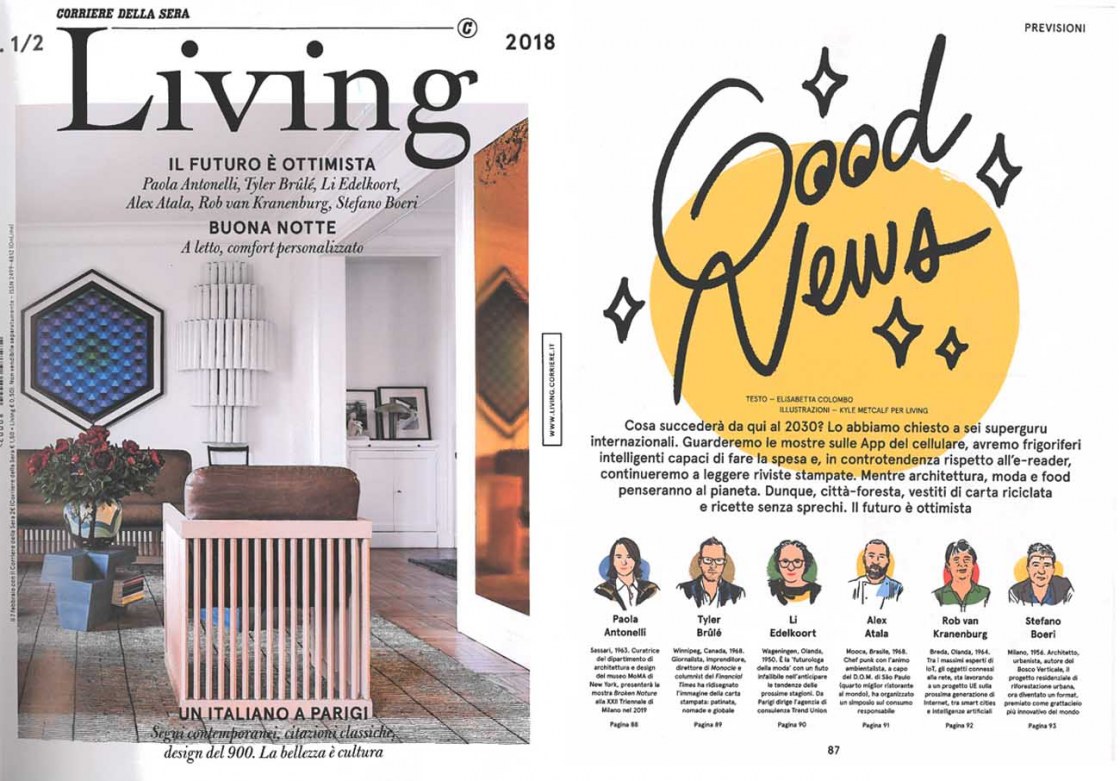
January – February 2018
What will be the challenges of architecture?
There are two issues that must be addressed: poverty, which threatens more than 30% of the world’s population, and climate change, now close to an irreversible point. In both cases, architecture can be the tool to realize a different development policy, which helps in overcoming social inequalities and reforestation of the cities. Increasing the quantity of parks, gardens, creating tree-shaded facades are methods that I personally appreciate. These strategies will be discussed next November, in Mantua, in occasion of the first Global Forum on Urban Forests promoted by FAO.
How will our houses change?
They won’t be very different from those of today, ten years are not many. In the face of some growing phenomena, such as that of the “reconstituted”, enlarged or multi-core family, we will have to make our living environments more flexible. And while, on one side, the bedroom becomes a sort of complex studio, full of activities and functions, from sociality to work, the shared space will transform more and more in a dining area.
What role will technology play in the future of cities?
It could do a lot, especially for transport, by bridging the gap between public and private movements. Think of the electric cars or the cars on command that come to pick us up at home. They will be means adaptable to our personality: they change color, change shape and then, once left, return to be neutral. This will be the revolution of the coming years.
How do you imagine an ideal city?
It is made of intensity: variety of cultural exchanges and relationships within a great density of volumes and open spaces. If the density decreases or if the lifestyles are too homologated, the character of unpredictability characterizing urban realities is lost, and the anti-city takes over.
Can architecture exist regardless of history?
Architecture has its roots in the present and the present is undoubtedly built on history. But it is true that the most interesting buildings are those conceived in discontinuity with the existing ones. In addition to introducing elements of innovation, these ‘breaks’ improve the quality of the city, as happened with Torre Velasca that in the 50s has changed the skyline of Milan for the better.
Which of your projects tells better the future?
In China, where I lead the Future City Lab department of Tongji University, we are imagining a presence of Shanghai on Mars through the installation of city-forests that produce oxygen and therefore life. The hypothesis is to realize it by 2117, which is not even too distant in time. Among the closer projects: the green roofs of Paris, Vertical Forest for social housing in Eindhoven, the Orbital Wood of Tirana, and the Green River of Milan which recovers the underground water to provide geothermal energy to the city.
Do you recommend a place to watch for in 2030?
I look carefully at Rome: it has history, nature, extraordinary energies and the sense of what it means to be a cosmopolitan city. Today it-s having a hard time, but it doesn’t need much to make it back a big capital of the world.
Are you optimistic about the future?
I’m dealing with 2117, I can’t help from being optimistic. Architecture must anticipate the best future, this is it’s purpose. It must face the challenges, assess the risks but never stop designing more suitable living spaces.
